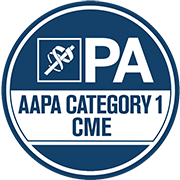WMJ Vol 123 Issue 1: Are Symptoms of Obstructive Sleep Apnea During Pregnancy Associated With Autism Spectrum Disorder in Children: A Case-Control Study
ABSTRACT
Background: Obstructive sleep apnea complicates 10% to 32% or greater of pregnancies, however, reports on long-term effects on the children of pregnancies affected by obstructive sleep apnea are limited.
Objective: We sought to test the hypothesis that the children of pregnant people with symptoms of obstructive sleep apnea during pregnancy have an increased incidence of autism spectrum disorder.
Methods: This was a case-control study comparing the pregnancies of people whose children were later diagnosed with autism spectrum disorder without a known associated genetic condition to those whose children were diagnosed with autism spectrum disorder with a known associated genetic condition.
Results: Of the 51 total parents who were eligible and consented to participate, 4 had a child with autism associated with a known genetic condition, and 47 had a child with autism with no known genetic condition. The prevalence of any snoring (50.0% and 36.2%, respectively) and daytime tiredness (75.0% and 89.4%, respectively) were similar between both groups.
Conclusions: In this study, the prevalence of any snoring and falling asleep while driving during pregnancy was higher in the sampled population than typically reported in pregnant people. While the sample size for this study was small, our preliminary results suggest that parents of children with autism have a high prevalence of sleep-related concerns during their pregnancies, which indicates the need for further investigation – especially for obstructive sleep apnea. Future studies exploring the neurodevelopmental outcomes of children of a cohort of pregnant people with known presence or absence of obstructive sleep apnea during pregnancy is warranted.
Intended Audience
The intended audience for this continuing education activity is healthcare professionals caring for the people of Wisconsin and beyond.
Learning Objectives
As a result of this journal-based activity, learners as members of the healthcare team will be able to:
- Summarize the literature about obstructive sleep apnea in pregnancy reviewed in this article.
- Explain results of this study investigating whether the children of pregnant people at risk of obstructive sleep apnea during pregnancy have an increased incidence of autism spectrum disorder.
- Discuss a coordinated effort to screen, test, and treat pregnant people for obstructive sleep apnea, particularly if risk factors such as obesity and hypertension exist.
FACULTY DISCLOSURE
It is the policy of the University of Wisconsin–Madison Interprofessional Continuing Education Partnership (ICEP) to identify, mitigate and disclose all relevant financial relationships with ineligible companies* held by the speakers/presenters, authors, planners, and other persons who may influence the content of this accredited continuing education (CE). In addition, speakers, presenters and authors must disclose any planned discussion of unlabeled/unapproved uses of drugs or devices during their presentation.
For this accredited continuing education activity all relevant financial relationships have been mitigated and detailed disclosures are listed below.
| Name of Individual | Individual's Role in Activity | Financial Relationship Disclosure | Discussion of |
| Marianna Shershneva, MD, PhD | Accreditation Specialist | No relevant relationships with ineligible companies to disclose | No |
| Julia Nick, BS | Author | No relevant relationships with ineligible companies to disclose | No |
| Kristin Seaborg, MD | Author | No relevant relationships with ineligible companies to disclose | No |
| Kathleen Kastner, MD | Author | No relevant relationships with ineligible companies to disclose | No |
| Mihaela Bazalakova, MD, PhD | Author | No relevant relationships with ineligible companies to disclose | No |
| Kathleen Antony, MD, MSCI | Author | No relevant relationships with ineligible companies to disclose | No |
| Mark Wirtz, MD | Reviewer | No relevant relationships with ineligible companies to disclose | No |
| Rachna Tiwari, MBBS | Reviewer | No relevant relationships with ineligible companies to disclose | No |
| Fahad Aziz, MD | Editor | No relevant relationships with ineligible companies to disclose | No |
| Laura Ozkan, PA | Reviewer | No relevant relationships with ineligible companies to disclose | No |
| Roberta Pawlak, PhD, RN, NEA-BC | Reviewer | No relevant relationships with ineligible companies to disclose | No |
|
*Ineligible companies are those whose primary business is producing, marketing, selling, re-selling, or distributing healthcare products used by or on, patients.
The ACCME does not consider providers of clinical services directly to patients to be ineligible companies.
Accreditation
Accreditation Statement
 | In support of improving patient care, this activity has been planned and implemented by the University of Wisconsin–Madison ICEP and the Wisconsin Medical Journal. The University of Wisconsin–Madison ICEP is jointly accredited by the Accreditation Council for Continuing Medical Education (ACCME), the Accreditation Council for Pharmacy Education (ACPE), and the American Nurses Credentialing Center (ANCC), to provide continuing education for the healthcare team. |
Credit Designation Statements
American Medical Association (AMA)
The University of Wisconsin–Madison ICEP designates this journal-based CE activity for a maximum of 1.0 AMA PRA Category 1 Credit™. Physicians should claim only the credit commensurate with the extent of their participation in the activity.
AMERICAN ACADEMY OF PHYSICIAN ASSISTANTS (AAPA)
 | The University of Wisconsin–Madison ICEP has been authorized by the American Academy of PAs (AAPA) to award AAPA Category 1 CME credit for activities planned in accordance with AAPA CME Criteria. This activity is designated for 1.0 AAPA Category 1 CME credits. Approval is valid until 04/21/2025. PAs should only claim credit commensurate with the extent of their participation. |
Continuing Education Units
The University of Wisconsin–Madison ICEP, as a member of the University Professional & Continuing Education Association (UPCEA), authorizes this program for 0.1 continuing education units (CEUs) or 1 hour.
Available Credit
- 1.00 AAPA Category 1 CME
- 1.00 AMA PRA Category 1 Credit™
- 1.00 University of Wisconsin–Madison Continuing Education Hours
- 1.00 Approved for AMA PRA Category 1 Credit™
Accessibility
If you need anything to participate in this program, please contact [email protected].
Required Hardware/software
Free, current version of Chrome, Firefox, Safari, or Edge. Some older browsers and Microsoft Internet Explorer could produce error messages or not display the content correctly.
Free, current version of Adobe Acrobat Reader or other .pdf reader.

 Facebook
Facebook X
X LinkedIn
LinkedIn Forward
Forward